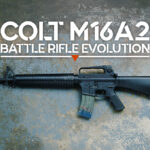
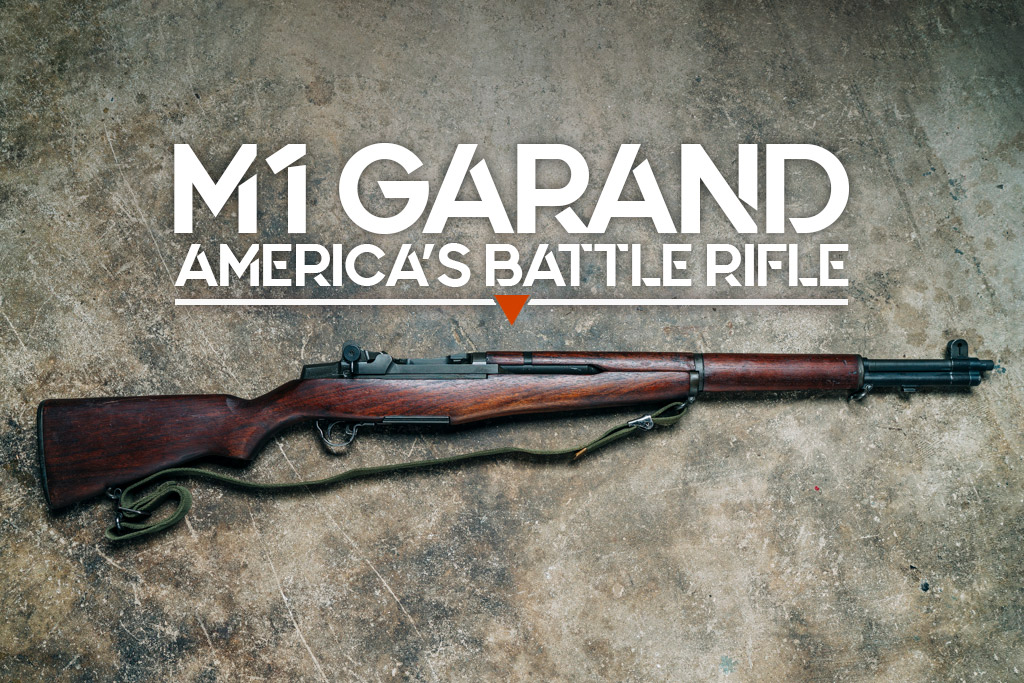
If the Winchester 1873 was “the gun that won the west,” perhaps we could say the M1 Garand is “the gun that won the war.” The rapid-firing, heavy-hitting, distance-stretching reputation of M1 Garand placed fear in the hearts of its enemy long before the trigger finger flexed.
The story of the M1 Garand is a story of American ingenuity and determination. The M1 Garand is among the most iconic firearms of the last century. And in this guide, we intend to explore the birth of the M1 Garand, its rise to popularity, and how it lives on. We’ll also cover the unique features of the M1 and its variants.
M1 Garand History
The DNA of the M1 Garand goes back to the 1920s when development began. The military wanted a semiautomatic rifle that could handle the high pressures of the 30-06 rounds.
Officially known as the “Semiautomatic, Caliber .30, M1 Rifle,” the Garand underwent many prototypes before achieving a suitable form.
Here are a few questions related to the history of the M1 Garand:
- Who invented the M1 Garand?
- Why did the M1 Garand replace the Springfield M1903?
- How well did the M1 Garand function in battle?
- Pros and Cons of the M1 Garand
Let’s have a closer look at each of these questions. Later, we’ll look at more specific features and variations.
Who Invented The M1 Garand?

M1 Garand designer, John C. Garand, holding his completed battle rifle.
Born in Quebec in 1888, John C. Garand was a civilian engineer and the main man behind the M1 Garand. After showing promise with his initial work, his design for the M1 ultimately went forward, and eventually into production.
The earliest known models of the M1 Garand, which hit production around 1936, had some flaws that later models ironed out before the full swing of the Second World War.
The production of the M1 Garand began ramping up from 20 rifles a day in 1938 to 200 a day in 1940. As the war unfolded, soldiers across the globe – from the Philippines to Norway, called the M1 Garand friend.
There were good reports about the M1 Garand. General Douglas MacArthur said: “The Garand Rifle has proved itself excellent in combat in the Philippines under combat conditions. It operated with no mechanical defects, and when used in fox holes, did not develop stoppages from dust and dirt.” As a result, the M1 grew in popularity.
John Garand received many awards for his work on the M1 Garand, including the Meritorious Civilian Service Award and the Medal for Merit.
Why Did the M1 Garand Replace the Springfield M1903?
We’ve already touched on some reasons for the shift from the M1903 to the M1. The 1903 was the same 30-06 caliber, but it was a bolt action and had a five-round capacity. The M1903 hung around for the beginning of WW2, as some units needed proof that the M1 was up for the task.
The Marines, known for their dedication to good marksmanship, wanted to see the rifle prove itself before letting go of the trusty 1903. They would also play a pivotal role in the later development of the M16.
Ultimately, the military wanted something with more capacity and firepower. The M1 Garand delivered both. And, as the Garand’s reputation spread, most military units were happy to make the switch.
If you’re curious, here’s a historical video on the M1 Garand operation.
How Well Did It Work In Battle?
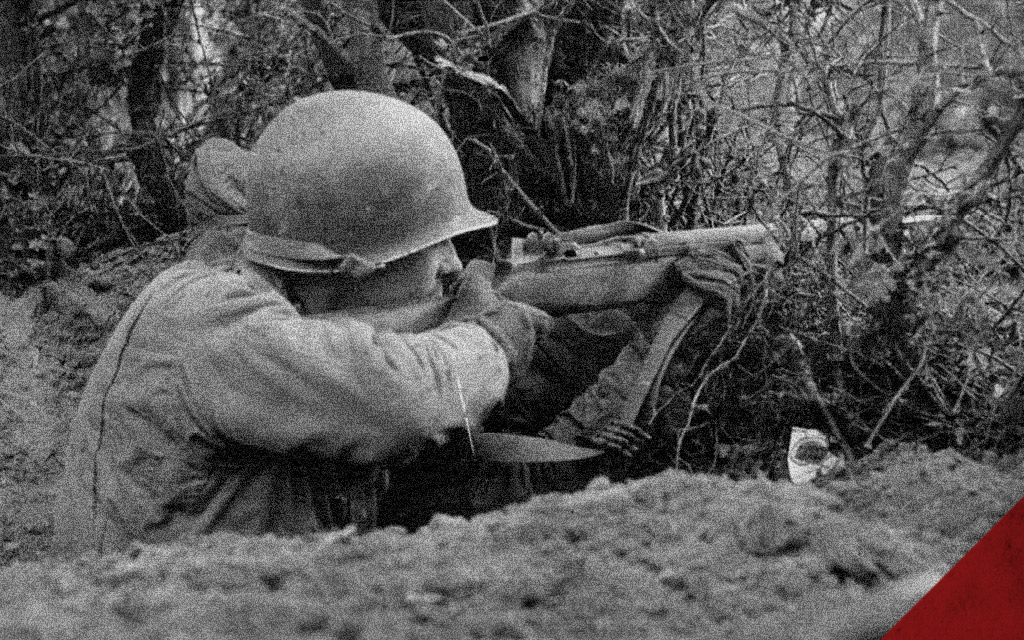
The reliability and increased firepower of the M1 Garand made it a favorite of soldiers to carry into battle.
By the 1940s, as the United States became more entrenched in WW2, the M1 Garand began seeing greater adoption. First, let’s examine how the Garand and its variants applied to battle.
Several battle applications of the Garand family:
- First, the standard 24-inch barrel M1 became the primary firearm of many infantrymen, allowing them to stretch their range and giving them immense stopping power in the face of a gruesome charge.
- Second, later modifications made use of the M1 Garand as a sniper rifle – these weapons had a specially mounted scope, and some other features we’ll get into later. Suffice it to say that the M1 Garand proved useful as a long-range weapon.
- Third, there was another popular variant – the M1 Carbine. These nifty and light weapons had a shorter barrel and a less powerful .30 Carbine caliber; however, what the Carbine lost in power and distance, it gained in maneuverability and capacity.
Now, let’s look at some of the pros and perceived cons of the Garand.
Why Did Soldiers Like The M1 Garand?
With the same caliber, the heftier M1 Garands had less recoil than the 1903. In this way, soldiers were able to achieve greater firepower down range. Also, the Garand caused less fatigue overall when comparing rounds fired per minute (with the 1903).
Another positive point was how quickly a soldier could get the rifle in a fight. In close-quarter combat, urban street fighting, or the jungle setting, the M1 Garand could be raised and rapidly fired from the hip. Also, once a soldier learned the method, he could reload the M1 Garand with surprising speed.
There were reports from German soldiers in WW2 that they believed each American soldier had a high-powered machine gun – such as the rate and power of the fire.
Finally, the M1 Garand was loved because it was reliable. WW2 entered every climate and ecosystem imaginable, from jungles and mountains to cities, beaches, and deserts. The Garand saw all environments and all types of weather – snow, rain, volcanic ash, extreme heat, and extreme cold. And yet, with relatively straightforward maintenance, the M1 Garand kept fighting.
Dislikes About The M1 Garand
The Garand certainly had a few perceived flaws. We’ll touch on some of these for context, but remember that “flaws” is often a relative term. Regardless, based on historical accounts, here are a few potential downsides to the Garand.
First, there was a learning curve to properly reloading the M1, and avoiding the infamous Garand Thumb. If soldiers weren’t careful to control the rifle, the action would slide forward and pinch the thumb. However, after training, this wasn’t a serious problem.
Second, though it’s an iconic sound these days, there was some concern about the “ping” upon the ejection of the clip. The feeling was that this could notify nearby enemies that an American soldier was out of ammunition and needed to reload.
Third, some wanted more rounds. While eight rounds were certainly more than the five in the M1903 and proved effective, it was still less than the 20 to 30-round capacities that would soon become standard.
Finally, some paratroopers found the Garand cumbersome during jumps (many would adopt the M1 Carbine). Also, it had the well-known “seventh-round hang-up,” though later production largely ironed out this issue.
While every tool has its strengths and weaknesses, the benefits of the Garand far overshadowed the cons.
M1 Garand: Features & Specs
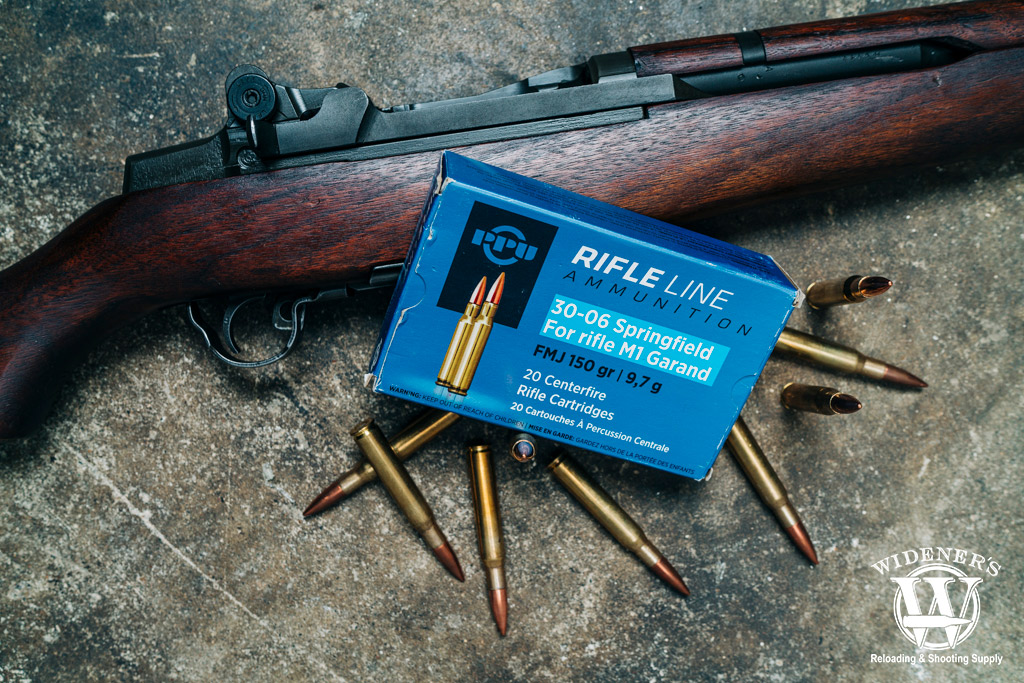
The M1 Garand is a semiautomatic gas-operated battle rifle chambered in 30-06.
The M1 Garand is a semiautomatic gas-operated 30-06 shoulder rifle. It utilizes an en bloc clip (stays within the firearm while the weapon is firing) and has a gas system that is comparable in function to the AK-47.
Let’s take a moment to look at the specs of the “standard” M1 Garand. This will give you a baseline reference as we begin talking about the practical applications of the rifle, and some of the variants that sprang up.
Specs of the M1 Garand:
- Caliber: .30 (30-06)
- Weight: ~ 9.5 Pounds, depending on the wood grain; reports were that functional weight was often as much as 11 pounds
- Length overall: 43.6 inches
- Barrel length: 24 inches
- Mechanism: Semi-auto gas operated
- Sights: Aperture, adjustable
- Practical range: up to 500 yards (this is, of course, debatable and dependent on the shooter)
- Capacity: en bloc cartridge clip holding eight rounds
- Trigger pull: 5.5-7.5 lbs.
Note on M1 Garand Serial Numbers: If you know the specifics of M1 Garand production, you can match serial numbers with specific historical periods. For example, the earliest serial numbers (80,000 – 700,000) were early WWII era. Up to 3,900,000 was about the last Garand to see WWII.
Common Variations
Let’s talk about three notable variations of the M1 Garand. Some of these changes were more recent, while others were developed beside the Garand in the 1940s. As you consider the modifications, remember the historical context and the state of firearm technology at the time.
Here are three important variations to the M1 Garand:
- The M1 Garand sniper rifle
- The M1 Carbine
- The 7.62mm NATO M1 Garand
Note: some may have heard of an M1 “Tanker” model. This was an 18-inch barrel prototype of the Garand and never went into service for a multitude of reasons, difficulty in controlling it being one of them. So the “Tanker” is a name that came afterward and was never part of official production.
M1 Sniper Rifle (M1D)
The M1D sniper variants began popping up after the arrival of the M1. The sniper variant had a cone flash suppressor and a flash muzzle suppressor. These features gave the rifle more stealth.
However, the oddest thing about the M1 Garand sniper variants is probably the scope. With the top-loading/ejecting nature of the Garand, a normal scope position wasn’t possible. So, for the Garand, it had a scope mount to the left of the rifle. This offset scope could be easily attached and removed and allowed for normal function of the gun.
The sniper variant also came with a leather cheek pad, which helped the sniper align his gaze with the offsite scope. There were several types of scope, but one of the most common was the M84 telescopic sight.
The M1 Carbine

Think of the M1 Carbine as a mini-Garand chambered in 7.62x33mm.
The M1 Carbine proved popular. Note that this weapon shares a similar name and style to the M1 Garand, but the Carbine is its own thing.
The M1 Carbine was a gas-operated semiautomatic .30 carbine (7.62x33mm). The gun had an 18-inch barrel and took magazines with a capacity of 15-30. It weighed in at around 5.8 pounds when fully loaded.
While the Carbine didn’t have the power of the Garand, it was undoubtedly an easier weapon to handle. This feature is ideal for paratroopers or those needing more than a pistol without the heft of the Garand.
7.62 NATO Version
While some modern Garand models were specially made for .308, back in the day, there was an attempt to convert existing Garands to the 7.62 NATO. (Some believe the 7.62 NATO and .308 are the same thing – but they are slightly different. You can read about it in this guide to the .308 vs. the 7.62 NATO)
The initial attempts at converting the M1 to the NATO round weren’t optimal. Finally, in the ’60s, a request for new M1 Garand barrels was explicitly made for 7.62 NATO rounds. There were about 30,000 of these barrels made.
In the ’60s, the military moved to the M14, so the Garand, as a 7.62 NATO rifle, never caught on in the same way. If you ask anyone today, the M1 Garand is still known as a 30-06 rifle.
Note: other modifications include the M7 Grenade Launcher. The grenade launcher was attached to the front of the rifle, similar to the sniper attachments.
M1 Garand: The Legend Lives On
Not only is the M1 Garand a prized collector’s piece, but it is also still employed by hunters and competition shooters worldwide. Furthermore, the M1 Garand’s reliability and ruggedness inspired other rifles. For example, Kalashnikov also noted the M1 (in the book The Arms and the Man) as a significant inspiration for the well-known Ak-47.
The Civilian Marksmanship Program (CMP) has played a pivotal role in the restoration and distribution of the Garand. This program gets M1 Garands into the hands of modern firearm enthusiasts and hosts competitions and programs where the M1 Garand is featured.
The brave men who carried the M1 Garand inspire the modern generation. The continuation and preservation of the M1 Garand’s legacy is, in part, a tribute to those who wielded the M1 Garand amid the world’s most deadly war.
Conclusion: The Legacy of the M1 Garand
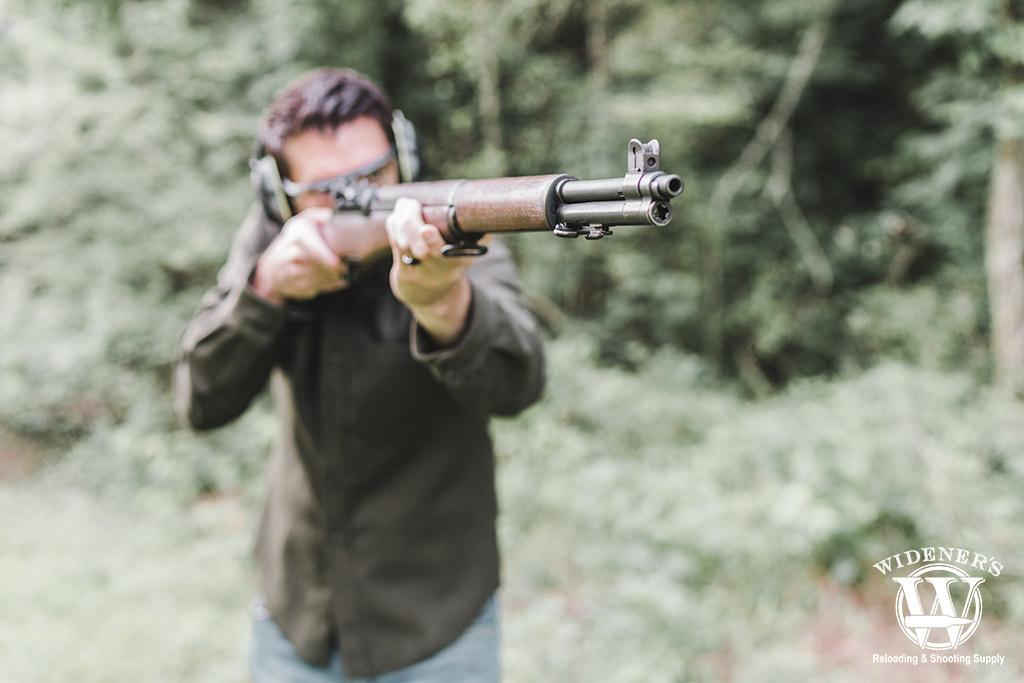
The “ping” heard round the world, the legacy of the M1 Garand lives on.
Of course, this article is only a teaspoon of the ocean of information and history surrounding the M1 Garand. Hopefully, you’re interested in digging deeper and learning more about the rifle our forefathers used to defend the values we cherish.
“In my opinion, the M-1 rifle is the greatest battle implement ever devised.” – General George Patton
The impact of the M1 Garand lives on to this day. Not only was this rifle loved by soldiers at the time and enthusiasts today, but we should remember the weapon for its technological integrity.
As we look back, it’s common for relics to develop a flair of magic. This can raise the question: was the weapon really that wonderful? Are we romanticizing it? In the case of the M1 Garand, I can confidently state: the M1 rifle was as beloved then as it is now.


